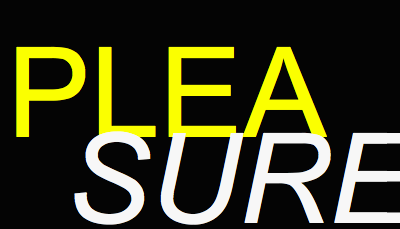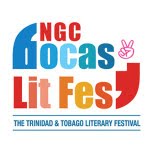Let me start by just saying how pleased I am to be at this conference. I just want to support the idea behind it; the necessity to talk about LGBT lives in the Caribbean outside the discourse of oppression and victimisation, especially where that narrative is so easily consumed by sometimes well-meaning outsiders and insiders who then, unwittingly perhaps, refuse to acknowledge any other possible narrative, who roll their eyes or who dismiss as naïve and overly romantic any counter-story, any counter-narrative that points to ways in which LGBT people in the region experience hope, belonging, comfort, community, or even joy in the Caribbean.
I know, for instance, several Caribbean writers and scholars make it a point, for instance, to refer to our African ancestors as “the enslaved people” and not as “slaves”; the importance, more than just semantics, is to give agency, to acknowledge the ways in which black people did not participate in their own oppression. It is similarly important, I think, to do the same for queer lives in the Caribbean – people who sometimes and on some days live loved and wonderful lives.
And none of this reduces the absolute urgency to talk about and to tackle homophobia when and where it exists. These narratives must happen concurrently: a discourse about homophobia and what happens beyond it.
I have not titled this paper but I have tried to think through the brief for this panel, of the role of art, the role of the artist, the role of the writer to community—even risking all the preciousness that we call upon ourselves when we begin to think about our functions or our roles. So in this paper – and at some risk to myself because Jamaica is a small place – I want to return to a public conversation that I had with a Jamaican journalist and poet Mel Cooke.
On the face of it, it may seem that I was picking an argument with Cooke because of his homophobia. And that is pretty much true. Cooke’s homophobia is demonstrated in the article we will talk about. It was all the more dangerous because it was the kind that would not acknowledge itself. It was genuinely not aware of itself as homophobia. His discrimination was a close cousin to much of the racial tensions in America today, which is to say it was a series of micro-aggressions. His homophobia was casual homophobia. And when confronted, he eagerly pointed to the ways in which he had been an ally; in which he had openly condemned the more obvious and violent forms of homophobia in Jamaica.
Mel Cooke’s article, ‘Bye Bye, Boom Bye Bye’, published on 4th June, 2015, recounts a disturbance. The disturbance, though happening very clearly in Cooke’s own psyche, he locates instead in the body of a man he encountered at a furniture store in Jamaica. His problem with the man, according to the article, was not that the man was very possibly gay. His problem was a kind of gender performance that he found so outlandish, so preposterous that it reduced the man into being a jackass and a caricature of his own self. This is how Cooke’s article begins:
I was in Courts on Constant Spring Road, St Andrew, in December when I saw it. There were two of the things, but one was especially itty. It wiggled up the steps to the store's upper level behind a store employee. It wiggled, it simpered, it held its handbag in the crook of an arm with the wrist especially limp. It preened and smoothed down its hair and reveled in an oddly bronze complexion and surreptitiously glanced around to see the effect on those who were around.
It was disappointed. No one batted (and that is a pun, in case you missed it) an eyelid.There is much irony that is lost on Cooke. He says no one batted an eyelid. This pleases him. Everyone simply went about their shopping refusing to be drawn into the intended raucous that Cooke assumes this man, this person was trying to create. And yet Cooke is writing an article in a national newspaper about the incident. Sir, someone did bat an eyelid. But more than that Mel continues.
What did I do? What anyone interested in observing human behaviour would, naturally. I followed back a it. And upstairs I saw a person reclined in one of the chairs on display, pouting as he looked at his telephone, which he was suddenly very interested in now that there was no potential audience for the it which he had projected.The ironies pile up one atop the other. There was no potential audience for this man’s performance of gender and yet Mel follows him through the store. Sir, there was an audience.
Like so many of us who sit easily in our privilege, it does not occur to Mel that following a man through a store to gawk at him is an act of aggression. His article goes to some length to rob this man of personhood; of his humanity. Yet, the writer allows himself to follow because it is what “anyone interested in observing human behaviour” would do, naturally. There is not time enough here to talk about what is meant by that word naturally; what behaviors are credited or discredited as being natural or unnatural in this scenario.
Mel’s position is a popular if not profoundly un-thought position in Jamaica. It announces itself in several ways: me nah have problem with battyman so long as them don't come to me with it; me no care what people want do in their bedroom so long as they don’t push it in my face; as long as they don’t brazen with it — as long as they act natural, heteronormative — man must act like man, woman must act like woman. It should be acknowledged that this particular strain of homophobia is just as present in gay people. “Straight-acting” is used as a strange compliment. Does “white-acting” serve as a similar compliment? “No fats”, “no fems” etc. etc.
When the man gets bored of his own flamboyance, according to Mel, he resumes his personhood. Mel writes:
The costume was the same, but the persona totally different—deflated and different. Simply a person, different from me but certainly not intent on and failing to disrupt sensibilities.But I want to suggest here that my argument was certainly about a sort of homophobia but it went beyond that. And at its heart I think this was one Jamaican writer talking to another and at stake was the role of the artist, of the writer, who writes out of and back to that community. I’ve been thinking a lot about this over the last few years. What is the role of the Caribbean writer? And trying not to fall into a kind of silence because of this fear again of the earnestness that the answer to such questions might provoke. I’ve been thinking about this particularly because I’ve been challenged to think about it in a series of conversations I’ve been having in different countries in different times but always with a particular writer I very much look up to: the Trinidadian novelist Earl Lovelace.
Most recently this conversation happened about four weeks ago in Haiti. Lovelace always calls me to account for my generation of writers. Writers who he thinks lack the cause and the urgency that his generation of writers had. Earl will tell you that he had independence, nationalism, black power to fight for. And what do you have?
I try to tell him that if we seem cynical about these things it is not because we don’t believe in the fight but we now know who are excluded from these projects, who were left outside of nation and black power, including LGBT people, and we try to think of a Caribbean that might include more.
I am appreciating these conversations with Earl because … it was one of his novels that made me certain about what the role of the writer was. It was his novel The Wine of Astonishment, which tells a story about a community in Trinidad under threat—their way of life, their traditions, even their mannerisms are under threat by authorities who would have them act differently, behave more normally. To be themselves they have to meet in secret. And the law is now against them as well. This is a Spiritual Baptist community and a racist law was introduced to silence them. The leader of the church sees the damage the law has done to his flock. He knows that sometimes, when laws are so profoundly unjust, they must be broken.
In the chapter when he does this, when he breaks the law, he gives one of the most amazing sermons I’ve read in literature. He comes to his congregation in a state of repentance saying the problem was not just the law but him as well. He had failed because he had failed to tell them who they were. And in drawing out this sermon from him, the congregation shouts, “Tell us preacher! Tell us who is we!”
That to me was a community calling to its writers. Tell us writer, tell us who is we.
*
I know that is a high and holy presumption: of telling people who they are, offering them both a plodding banality and the incredible magic of themselves, of their personhood. But if we cannot offer them personhood, then at the very least we should do no harm. We should not take personhood from someone.
So for Mel Cooke to reduce this person to an it that was, for me, the most profound betrayal of one’s role as a writer, the greatest evil one could do on the page. Not only did he not tell this man who he was, but he would tell him that he was not.
Cooke’s failure was a failure of imagination: that this man who appeared as a story existed only as a spectacle. Performing only under his gaze, this man had no agency, no history, no ambition, he was nothing.
I think my job as a writer and pseudo-academic would be to remind this man of another unjust law in Jamaica that had to be repealed as well. In 1859, the poor people of Jamaica could take no more of the unfair toll that they had to pay on the main thoroughfare. For three nights they rioted, destroying the toll-keeper’s house and the tollgates at Savanna-la-Mar . The Falmouth Post described the rioters as, “ruffians, some dressed in female attire”. The Rebecca Riots of 1859—men dressed as women, fighting for justice.
My role as a writer is to tell the man at Courts that he belongs to that tradition. That even here he is rooted in a history of resistance and triumph. That he is a warrior. That in every nuance of the word, he is fierce. That he belongs. That he is beautiful. That he is a person.
*
Miller spoke on the panel, 'Coming Out, Coming Home', alongside artist Simone Harris, festival director of Belfast's Outburst Queer Arts Festival Ruth McCarthy and yours truly. The panel was put on with the support of the British Council and was chaired by artist Annalee Davis, Caribbean arts manager of the Council. You can watch the full panel at J-Flag's Facebook page here.
 |
You can read more about the Beyond Homophobia conference here.



























